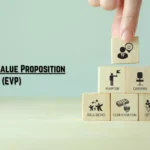Diversity, equity, and inclusion (DEI) are the main key focuses of every organization. Recruitment groups often face challenges while managing social justice, anti-discrimination, diversity, and inclusion within the workplace. An employee resource group (ERG) with an associated recruitment team is one tried-and-true way companies can promote a sense of belonging among workers and employers. In short, An ERG mainly plays a significant role in employee engagement and company management. Often, companies align the group with the HRMS solution to experience better HR practices.
Moreover, by being associated with the ERG, a company can build a strong employer brand and attract top talent.
In this blog, we will discuss ERGs in detail and understand why every firm needs to support employee resource groups in the workplace.
What are Employee Resource Groups?
The ERG full-form is an employee resource group, a voluntary or employee-led network that works for the organization based on shared identity, interests, perspectives, or goals. The primary purpose of ERGs is to promote every employee and employer’s personal and professional growth. It mainly nurtures the entire company community. After acknowledging what they are ergs, let’s dig deeper into their benefits types and practices.
Benefits of ERGs for Organizations
Employers frequently encounter situations where they must decide about talent selection, maintain a balanced employee-employer relationship, and manage their reputation. Partnering with the employee resource group works like a pill for the employer group. They feel calm, tension-free, and satisfied while handling the entire management. Here are the benefits of welcoming ERGs and tying up with the recruiter team.
- Improvised Work Condition
- Inclusive Workplace
- Enhanced Employee Experience
- Promote Diversity
- Creativity & innovation
- Improved Retention
1. Improvised Work Condition
In an organization, recruiters or the human resource team have different tasks and responsibilities; handling the entire employee management system can often become challenging. The presence of an employee resource group helps the entire employee management process by improving the employees’ work life in the workplace and revamping the company’s work conditions. The ERG creates a more welcoming and supportive work environment, improving employee engagement, job satisfaction, and retention. Besides, The group provides a scope for the employee to voice their concern and discuss tasks & responsibilities and other challenges.
2. Inclusive Workplace
An inclusive workplace is where every employee feels valued, respected, and safe regardless of their position, background, skills, experience, work styles, and ideas. Often, employers face challenges while handling thousands or more employees together, and every time, some micromanagement or mismanagement will always be overlooked. Here is the ultimate responsibility of an ERG: they help HR make an inclusive workplace where every employee, irrespective of their position, skill, or experience, feels safer and can be more engaged with the workstyle and ultimate productivity. Concisely, employee resource groups (ergs) initiate a fair and unbiased work practice with the company.
3. Enhanced Employee Experience
A company and ERG group ensures a combined group, providing systematic equality between employees. ERG mainly plans for ample employee access within the workplace, which creates a positive employee experience and strengthens the workforce. Many organizations use the ESS portal and other related tools, which allow employees to contact ERG groups directly.
4. Promote Diversity
The story goes that unity in diversity promotes an inclusive work culture. An employee resource group ensures an unbiased work environment where all types of employees, irrespective of region, religion, caste, or gender, work together. The group initiates the brainstorming process for every team, allowing them to tackle problems, think and analyse diverse viewpoints and generate output.
5. Creativity & Innovation
Often, monotonous work routines create boredom in employee work practices, hampering productivity. An ERG helps identify new approaches to problem-solving, challenge conventional thinking, and promote creative brainstorming, which supports a smooth work culture that encourages employees to think and understand new avenues for work productivity, creative advancement, and progression.
The ERG and management team contribute to a culture of continuous employee learning and innovation. This culture assists the company in staying competitive and adaptive to an ever-evolving market.
6. Improved Retention
Prospective employees are mainly looking for work in multigenerational workplaces where all kinds of employees, irrespective of age, experience, and region, are welcomed and incorporate their full identities into work. An employee resource group creates an inclusive workplace, maintains a work ambience where employees feel safe and valued while working, and achieves rewards for their hard work. A place where the employee feels satisfied and happy during their working tenure must be retained for a long time.
Types of Employee Resource Groups
Employee resource groups (ERGs) are always based on some common ground between the employees. They can be formed for any common purpose or interest to ensure that no workers are alienated just because they are underrepresented in the organization. Let’s discuss some of the most common types of ERG groups.
➔ Diversity Inclusion ERGs
These are the most common types of employee resource groups (ERGs). They are intended to provide representation to diverse employees, such as those with different nationalities, disabilities, ethnicities, genders, parental statuses, religions, sexual orientations, and more.
Diversity and inclusion groups help to build an inclusive company culture by welcoming the work environment to diverse employees. ERG leaders and group members give them a sense of belonging and make them feel supported by the firm to voice their issues and opinions.
➔ Community Service ERGs
Community service employee resource groups allow employees to volunteer and give back to society in various ways. They organize multiple events where group members can use their skills and efforts to help local communities.
Community service aligns its initiatives with the company values and can be a significant part of its CSR activities. In addition, these ERGs are a huge contributor to employer branding.
➔ Health and Well-being ERGs
Employee resource groups (ERGs) concerned about employees’ health and well-being need more time now. These groups actively take physical and mental health initiatives to create a workplace that supports them. They contribute hugely to building a healthy work-life balance for group members, which is also essential for their career development.
➔ Professional Development ERGs
Another common type of group is employee resource groups (ERGs) intended to develop professional skills. ERGs benefit both employees and employers. They help nurture emerging talent and leadership skills through mentorship and skill development workshops, which also help members with career development or advancement.
How Do Employee Resource Groups Support Employees?
Employees must be satisfied and happy when we get assistance from the employee resource group. The group also needs human resource groups and management teams, as their work burden is minimized, and they can focus on their administrative work. Here is a detailed overview of how the ERG supports employees;
- Promote Flexibility
- Deliver Proper Time
- Enhance Collaboration
- Allocate Budget
- Provide Resources
➔ Promote Flexibility
Promoting flexibility in the workplace is an essential task for every management team. Employers often face challenges in maintaining flexible working arrangements, where the presence of an employee resource group accelerates the process so employees can work in a flexible atmosphere.
The group advocates numerous workplace-based policies that support employees’ work-life balance. It mainly creates a space for workers to connect to management and discuss their work growth or difficulties during their tenure. This creates a better understanding between employers and employees and cultivates a more inclusive and adaptable workplace that supports personal well-being and professional growth.
➔ Deliver Proper Time
An employee resource group is a team of HR professionals who smoothly accelerate an organization’s employee management process. Hence, management doesn’t have to invest time in employee sourcing and handling. The group mainly provides targeted resources, support networks, and efficient channels for navigating workplace challenges. With the assistance of the ERG, employees smoothly access mentorship, maintain smooth collaboration with management, deliver views, and share experiences, which reduces employers’ time spent searching for solutions to workplace issues.
➔ Enhance Collaboration
Employee Resource Groups (ERGs) assist recruiters by connecting them to diverse talent pools and offering insights into the needs of different communities. ERGs facilitate employee referrals, enhance employer branding, and provide a platform for recruiters to engage with potential candidates through networking events. The ERG helps tailor job descriptions and interview processes to be more inclusive, ensuring that recruitment efforts attract qualified candidates and are aligned with the company’s values and culture.
➔ Allocate Budget
The employee resource group helps the management team allocate and maintain the entire business budget so that the team doesn’t have to face challenges when counting the budget at the end of every financial year. The group also sought assistance from the financial specialist to set the financial process allocation more accurately.
➔ Provide Resources
Employee Resource Group provides recruiters with the right guide and proper assistance by giving detailed insights into what types of candidates are required for the desired field.
ERGs can also help refine job descriptions and interview processes, improve employer branding, and promote employee referrals. With the proper guidance of ERG, human resource specialists can better align their strategies and targets with diversity and inclusion goals, ensuring they attract qualified candidates and an excellent cultural fit for the organization.
Top 5 Practices of the Employee Resource Groups
What are the work and responsibilities that the employee resource group performs while managing the HRMS solutions? Here are some examples of their practices and solutions.
In an organization, we often think twice before tying up with a third-party-based employee resource group because it is an extra expense. Some companies still have confusion about the importance of the employee resource group. Let’s look at the top 6 practices employee resource groups perform to improve employee management practices.
1. Clear Mission, Objectives, and Alignment with Company Goals
Employee resource groups have a clear mission to achieve the product goal and attain success. They define a clear objective that helps employers and employees understand the work process, related tasks, and responsibilities, which align with the company’s diversity and inclusion (D&I) strategy and the specific needs of the employee group. They help the recruiter team by providing end-to-end support while recruiting, onboarding, enhancing retention, fostering inclusion, etc.
2. Executive Sponsorship and High-end Leadership Support
ERG is considered the most successful team that plays the leadership support role, elevating the group’s visibility within the organization. Sometimes, employees work hard, yet they fail to promote themselves to their higher management, or their work needs to be identified by their higher authorities. In such scenarios, the ERG group strengthens the teams’ potentiality and legitimacy, making the process easier to broaden organizational visibility.
Sponsors can also advocate for the ERG within decision-making circles and help bridge the gap between the group and other departments or leadership teams.
3. Inclusive and Diverse Membership with Open Participation
Diverse participation in company growth and productivity helps the employees create a richer, more dynamic community and delivers different perspectives on equity, belonging, and opportunity issues.
An ERG group ensures that every organization employee maintains streamlined communication and collaboration with team members and higher authorities. The group promotes inclusivity and allows cross-functional understanding within the team and with higher management.
4. Focus on Professional Development, Mentorship, and Advocacy
ERG provides a platform where the employee gets a chance for their career development by growing professionally alongside attainment advocacy from the group members. The group deliver leadership training, skill-building workshops, and networking events.
ERGs also raise awareness of underrepresented groups’ challenges and support equitable promotions, pay, and career advancement opportunities.
5. Measurement, Accountability, and Regular Communication
An employee resource group is also considered the technical group, responsible for measuring team, management, and product success and making regular progress within every team member and higher management panel.
Establishing key performance indicators (KPIs) like membership growth, event participation, or retention rates helps track ERG effectiveness. Regular feedback from members and other stakeholders can also provide insights into areas for improvement. The group effectively communicates with the broader organization by introducing weekly newsletters, fun activities, numerous collaborative events, and many more, helping raise awareness of the ERG’s impact and fostering transparency.
What’s the Difference between ERGs and Affinity Groups?
Here are the detailed differences between the Affinity groups and Employee resource groups (ERGs)
- Affinity groups are informal groups of employees primarily focused on providing networking opportunities to the group members.
- The company leadership may not recognize these groups as they are not supported by HR or part of the formal structure.
- Employee resource groups are employee groups that are formally established by the management and are part of the organizational structure.
- These groups are set to give a sense of belonging and provide professional development opportunities, support, and a fair voice to underrepresented for professional development along with networking opportunities.
Conclusion
Employee resource groups, or ERGs, are employee-led groups formed to include underrepresented employees in the workplace. ERGs can also be created for people with varying interests. These groups benefit firms in multiple ways, such as improving employee engagement and increasing retention. In addition, they’re a good tool for leadership development and innovation in the workplace.









